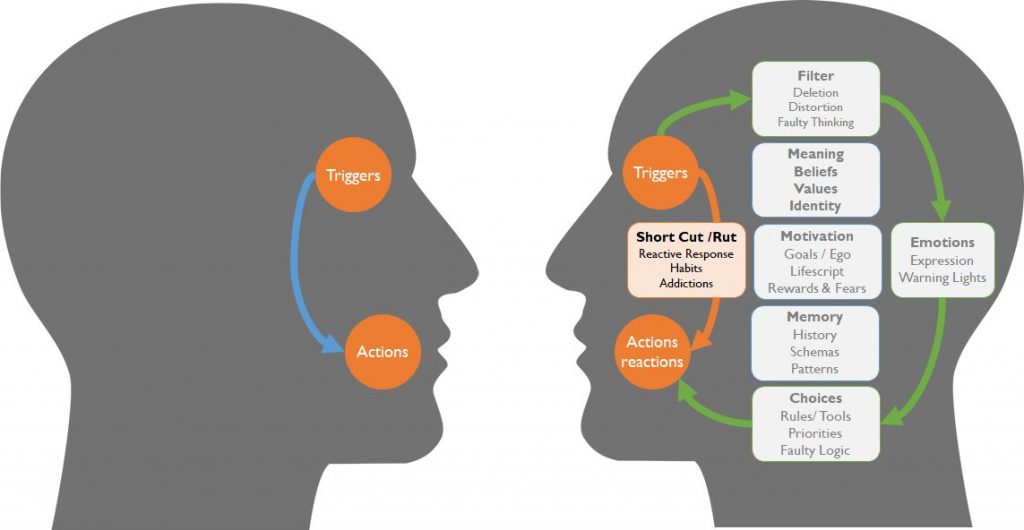Oh, we think we are rational creatures, particularly when it comes to business decisions. In reality we are slaves to our unconscious both personally but in the corporate culture. Only by taking time to uncover this can we then be conscious in our decision making. If not, we are:
- susceptible to ‘group think’, just following the herd
- prone to knee-jerk decisions
- liable to respond disproportionately to criticism or decisions
Many failed projects and disasters come from deciding without consciously thinking. Examples include:
- When a development team takes customer feedback as criticism and won’t listen to it. “They don’t understand”
- When a founder of a business reacts strongly against an idea – because it might threaten their identity.
- When a company fails to apologise for mistakes for fear of litigation
So what is the antidote?
In shaping decision making meetings – the first steps is to agree how to decide. The diagram below shows the personal view of how we take information in, process it and make choices. The corporate world is the same
 Firstly
Firstly
Triggers – What events, information do we bring into meetings. A starting point is data driven decision making; using a clear set of reports for each meeting
Filters – Here we can easily ignore trends, or argue against data because we don’t want to hear the news. It’s easy to jump to conclusions, so we must be aware of our ‘faulty thinking’
Meaning – This is often the ‘culture’ of the business. Why we are here and what we might believe. Steve Jobs want to make a dent on the world. Other organisations might believe sales is everything, or believe in collaboration, or ‘don’t rock the boat’
Motivation – In the corporate world, this is the Mission & Vision. It also includes our metrics and rewards – as that will impact the choices you make.
Memory – Corporate memory might be ‘we tried that and it failed’, as a way of pushing back from innovation. It might be around a merger – when Unisys came together from Burroughs and Sperry computer corporations, that division was still evident 20 years later.
Emotion – This might not be obvious, but you can see the emotion (or lack of it in meetings). How do people react to conflict? Do they express their emotions in an appropriate way, or do people bully, or stab each other in the back.
Choices – Finally there are the ways we make decisions. Surprisingly this is last on the list, since all the other components will influence whether we actively make choices, how we make them, and how we eliminate options.
Only registering the other elements can we make meetings more productive. We can take personal history out of the room. We can address personality types, and create a clear approach on how to deal with conflict and make choices.
In this way meetings become more productive, the chair-person more capable in leading the conversation, and a behaviour of completing tasks so each meeting moves the business forward.
